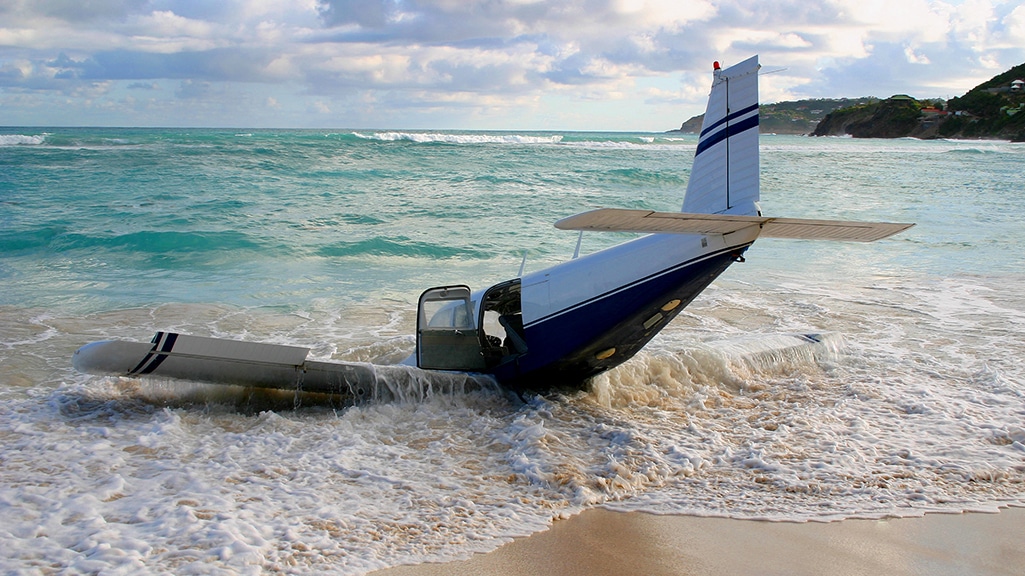The processes for adjusting and managing aircraft insurance claims have not changed significantly in recent decades. Depending on the extent of the damage, most hull claims have typically involved an adjuster being on site within a few days of an accident to assess the damage and plan for necessary repairs.
However, in a world in which we are increasingly time- and cost-sensitive, as well as environmentally conscious, change is afoot.

Leveraging Technology for More Efficient Claims Processing
The claims management process is increasingly streamlined by technology. These days, a light aircraft owner involved in an accident can take digital photographs on their phone and email them to the insurance company on the spot. Within minutes, the adjuster can make an initial assessment of the damage and authorize moving of the aircraft or other emergency measures.
The insurance provider then creates an electronic file (replacing the filing rooms full of paper that were once the norm), which automatically triggers the appropriate internal processes. For instance, automated workflows procure and archive electronic copies of routine documents, such as the insurance policy, into the file.
Electronic filing not only eliminates the tasks of creating and storing documents, but it eliminates the task of physically culling and disposing of paper files. A disposal date is simply entered, and the file is automatically deleted on that date.
Data-Driven Selection of Service Providers
Once the initial examination has taken place, a local mechanic or inspector can make a further diagnosis before the aircraft is sent to a facility for repair. Insurance providers choose a maintenance facility based on several factors, including expertise, cost, and availability. However, while the goal is to return the aircraft to service quickly, using local shops to avoid unnecessary transportation is influencing choices.
The same environmentally conscious approach is taken when procuring parts necessary to the repair. In addition to the use of recycled items, insurance providers often utilize ground transportation from a local supplier rather than airfreight from farther afield. Once the repairer has completed its work, the insurance provider can send payment electronically to insureds, repair facilities or any surveyors or lawyers.
Effective Management of Large Claims
Other positive changes relate to the way that insurance providers manage larger claims and even complex litigation. Spurred on by travel restrictions during COVID, stakeholders often conduct significant settlement negotiations and trials via videoconferencing platforms. Furthermore, major customers have the option to schedule claims reviews remotely, which has eased some scheduling challenges and accommodated attendees from multiple locations.
While some face-to-face meetings will no doubt return, the case has been proven that complicated matters can be managed well without all parties having to travel.
Addressing Increased Remediation Requirements
The benefit of positive cost and time measures that insurance providers are taking in the management of claims is, to some extent, offset by the increasing demand that insurers and aircraft owners to remediate accident sites and dispose of aircraft damaged beyond repair. While these actions are environmentally beneficial, their costs can easily spiral.
Many insurers assume the responsibility of ensuring any fuel leakage or other contaminants are properly contained and removed. However, entities such as the U.S. Environmental Protection Agency (EPA) and local authorities are mandating significant remediation of crash sites. This may involve removal of fuels and other hazardous waste.
Additionally, authorities are requiring the salvaging of aircraft that might once have been left in hard-to-reach areas, such as in deep water. These expenses can considerably increase any claim settlement.
Moreover, post-accident cleanup is not restricted to site remediation. Aircraft owners and their insurers are facing increasing recycling requirements related to aircraft parts and assemblies.
In meeting these requirements, they are learning that separating plastics and metals is no simple matter. One example of this is in electrical wiring. The hundreds of miles of wires in an airliner (approximately 170 miles on a 747) includes aluminum and copper, and these materials generally must be separated and tagged. The same is true of electronics and myriad other components.
Other examples of hazardous, toxic, and radioactive materials that owners must handle properly are fuel, oil, hydraulic fluids, deicing liquids, and batteries.
Commendable Efforts and Cost Control
The progress stakeholders are making in managing accidents and repairs in a more environmentally conscious and cost-effective way should be applauded. At the same time, industry and relevant authorities will need to work hard to ensure that the costs associated with disposal and clean-up are managed effectively.
This will help ensure that eco-friendly measures are sustainable for the long-term.